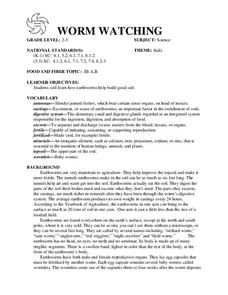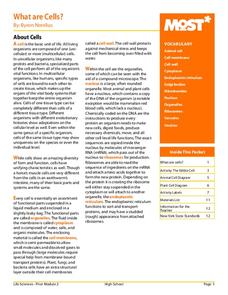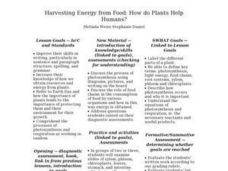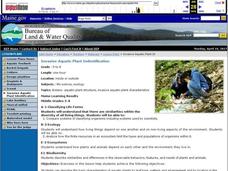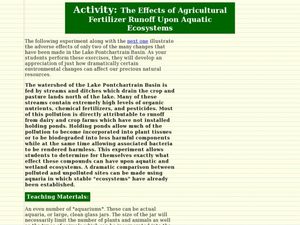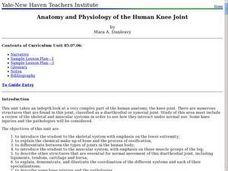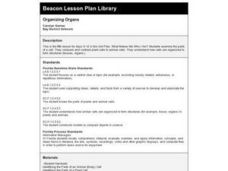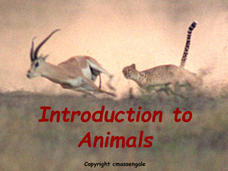Curated OER
Plant Structure and Growth
This plant structure and function PowerPoint addresses the main organs and the factors that affect its development as well as going into detail about the specializations at a cellular level. The cell functions and system...
Curated OER
The Inside Story- Cells, Organs, and Systems of the Human Body
Fourth graders study the human body from cell level to the inter-relationships of the systems in this unit. Students practice study skills throughout the unit.
Curated OER
Cell Cookies
Fifth graders, in groups, create a plant or animal cell out of cookies, frosting, and candy pieces.
Curated OER
The Living Environment
Sixth graders show what they know about plant and animal cells. In this cell project instructional activity, 6th graders get to choose a project based on their learning style. They can create a visual representation of cells, auditory...
Curated OER
Body Voyager
Students explore the significance of a resting and an active heart rate. In this heart instructional activity students chart data on their pulse and draw a diagram of the heart.
K12 Reader
Xylem and Phloem
The vascular tissue found in plants is the subject of a two-part comprehension learning exercise that asks kids to read the provided article and then to respond to a series of comprehension questions.
Curated OER
Animal and Plant Cell Journaling Activity
Jump into the classification of animal and plants cells, through this inviting lesson plan comparing Elodea leaves and Epithelial cells. Middle school learners will create wet mounts, write journal entries that compare specimens, and...
Curated OER
Building a Circulation City
Students identify the different organ systems found throughout the human body. Using a model, they explain and draw the flow of blood and name the parts of the circulatory system. They create their own circulation city in which to show...
Curated OER
WORM WATCHING
Learners investigate how earthworms help build good soil. They examine the worms carefully to find the ringlike segments and swollen band at the front of the earthworm's body. Students take turns dampening the soil every day and adding...
Curated OER
What Are Cells?
Energize the cells of young biologists with an edible life science activity. Engaging students in exploring the inner workings of plant and animal cells, this activity involves using colored jello and various sweet and...
Curated OER
Structure and Function of the Cell/Introduction to the Cell
So, this is not technically a worksheet, but rather a chapter of reading material, pictures, and diagrams introducing young biologists to the cell. Cell theory, diversity, size, and shape are described. The internal organization and...
Curated OER
Harvesting Energy from Food: How do Plants Help Humans?
Beginning botanists view slides of plant vascular tissue. They watch Magic School Bus Gets Planted, which you can find online, and then write a summary of what they have learned about plants. This lesson plan could be used with upper...
Curated OER
Invasive Aquatic Plant Identification
Students observe aquatic plants and animals and identify their systems. In this plants and animals lesson plan, students compare systems of organisms and orally express how plants and animals rely on each other.
Curated OER
The Effects of Agricultural Fertilizer Runoff Upon Aquatic Ecosystems
Students measure the toxic levels of runoff and discuss the effects it would have on the aquatic system. In this runoff lesson plan, students answer questions to how runoff would affect the animals in an aquatic system.
Curated OER
Anatomy and Physiology of the Human Knee Joint
Learners examine human anatomy with a focus on the knee joint. In groups, they research the chemical makeup of human bones and explain the different types of joints found in the body. To end the lesson plan, they identify the other...
Curated OER
Nerve Cell Informercials
Students research the structure and function of the nervous system. They prepare a model or representation of neural transmission. Students create an infomercial about nerve cells.
Curated OER
Plants: Form and Function
In this plants worksheet, learners compare and contrast vascular and non-vascular plants. Students learn the structure and function of the 3 types of plant tissues: dermal, ground, and vascular tissue. This worksheet has 27 fill in the...
Curated OER
Organizing Organs
Fifth graders research plant and animals cells and create a Venn Diagram to show the similarities and differences.
Curated OER
Obesity
Students examine how hormones affect different tissues. In groups, they make their own hormone-receptor model and identify the characteristics of tissues that respond to the different hormones. To end the lesson, they examine the role...
Curated OER
Marine & Aquatic Habitats Activities - Terrestrial Forests vs. Kelp Forests
Students discuss concept and specificity of habitats, both marine and terrestrial, list similarities and differences in the habitats of a kelp forest and a terrestrial forest, compare types of organisms that occupy corresponding types of...
Curated OER
Case Study Two: Shark Dissection
High schoolers read an article on sharks prior to beginning a dissection lab. As part of the lab, students identify differences between the shark anatomy and human anatomy and hypothesize why those differences exist.
Curated OER
Cells: Nature's Building Blocks
What you will find on this page is the general outline of a unit on the use of a microscope and the structure of the cell. There is no actual educational content here, so you will need to design the details of each of the four student...
Biology Junction
Introduction to Animals
Out of all animals, elephants alone lack the ability to jump. Scholars learn all about animals using a presentation full of fun examples. It describes different types of animals, the biological similarities and differences between...
Curated OER
Sizing Up the Supersize Croc
Students examine and compare traits of humans and crocodiles. In this crocodile lesson students use a ratio to estimate the height of a person and compare that to a crocodile.








